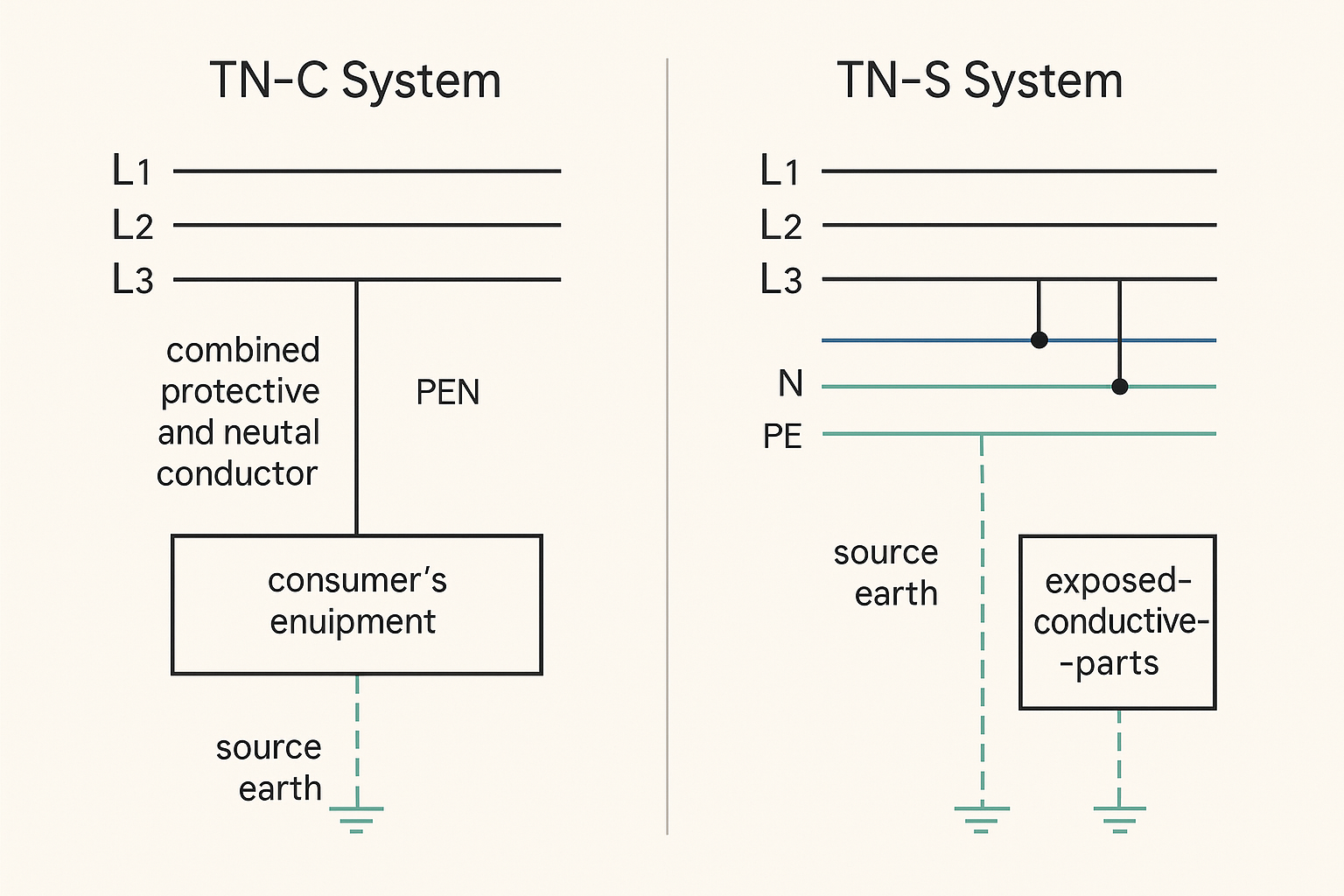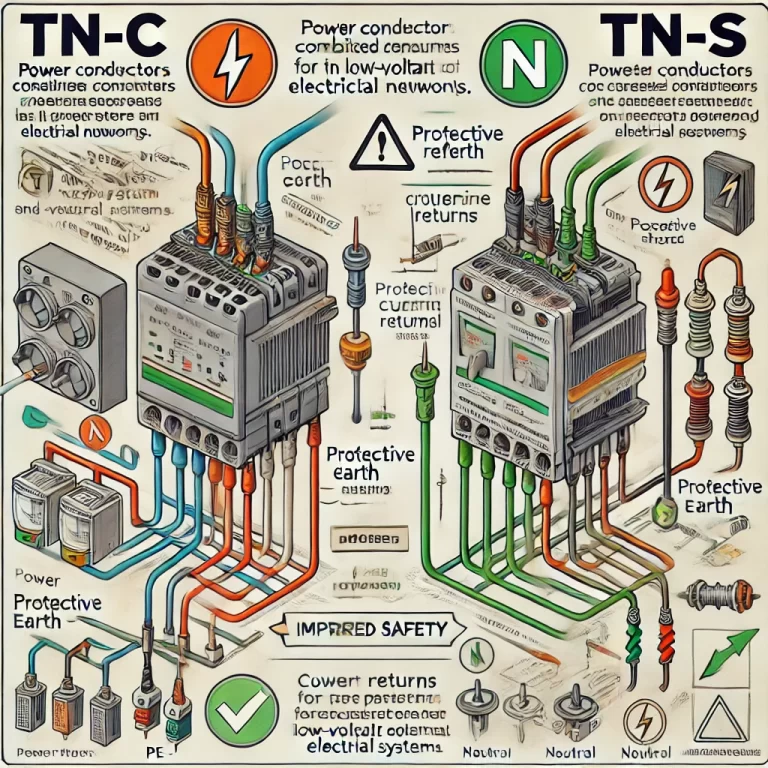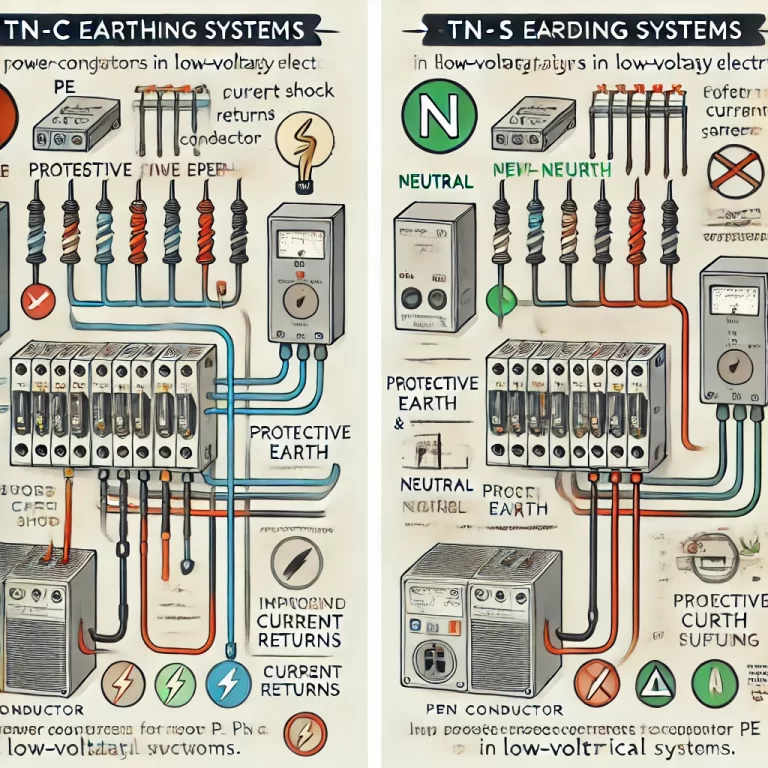The TN-C earthing system is a widely used grounding configuration in low-voltage power distribution networks. It is based on the principle of combining the protective earth (PE) and neutral (N) conductors into a single conductor known as the PEN (Protective Earth and Neutral) conductor. While it offers a cost-effective and straightforward design, it comes with inherent safety concerns that must be properly managed.
1. Structure of the TN-C System
In the TN-C system, the protective and neutral functions share the same conductor — the PEN wire. All exposed conductive parts of electrical equipment, such as metal casings and enclosures, are connected to this combined conductor.
The PEN conductor performs a dual function:
It carries the return current under normal operation (like a neutral wire),
It provides a path to ground in case of insulation faults (like a protective conductor).
Typical Schematic:
Power Source —— PEN —— Equipment
└—— Metal casing (grounded)
This configuration reduces the total number of conductors required and simplifies installation in legacy systems.

2. Risks and Challenges of TN-C Systems
Despite its simplicity, the TN-C system poses serious safety risks, especially in the event of a PEN conductor failure.
Key Risks:
Electric Shock Hazard: If the PEN conductor is broken or damaged, the exposed metal parts of the connected devices may become energized, leading to a severe electric shock risk.
No Isolation of Protective Current: Since the neutral and protective currents share the same path, it becomes impossible to isolate fault currents from load currents.
Inadequate Grounding Protection: In many TN-C installations, especially older ones, proper grounding at all outlets is not guaranteed. This can lead to delayed fault clearance and increased fire or shock risk.
3. Application Scenarios and Risk Control
The TN-C system is typically found in:
Older residential buildings,
Street lighting systems,
Low-risk or temporary installations.
It was favored in the past due to its:
Low cost,
Simplified cable layout,
Compatibility with older infrastructure.
However:
These benefits are outweighed by the increased risk of electric shock and equipment failure, especially as buildings age and electrical loads increase.
Modern upgrades are strongly recommended, particularly in:
Public facilities,
High-risk environments,
Industrial or commercial buildings.

4. Comparison: TN-C vs TN-S Systems
| Feature | TN-C System | TN-S System |
|---|---|---|
| Ground and Neutral | Combined in PEN | Separated PE and N conductors |
| Safety Level | Lower due to PEN failure risk | Higher due to separation of functions |
| Cost | Lower installation cost | Higher due to more wiring |
| Application | Older or temporary setups | Standard for new constructions |
The TN-S system separates the neutral and protective functions from the source point, which provides a more robust and safer grounding method. Although it increases installation cost, the reduced safety hazards justify its use in modern systems.
5. Safety Enhancement Measures for TN-C
If a TN-C system must be used, certain precautions can mitigate the associated risks:
Recommended Measures:
Install Residual Current Devices (RCDs): These devices detect leakage current and disconnect power quickly to prevent electric shock.
PEN Conductor Monitoring: Continuously monitor the PEN for mechanical or electrical degradation.
Regular Inspection and Maintenance: Ensure all metal parts are solidly bonded and that terminals are not corroded or loose.
Upgrade to TN-C-S or TN-S when feasible: For critical or high-risk environments, convert to a safer system.

6. Conclusion
While the TN-C earthing system was once widely used due to its simplicity and low cost, modern electrical safety standards have revealed its limitations. Especially in aging infrastructures, the risk of PEN conductor failure can no longer be ignored.
For long-term safety and compliance:
New installations should adopt TN-S or TN-C-S systems.
Legacy TN-C networks should be modernized wherever possible.
Use of RCDs, improved bonding, and regular system checks are essential until upgrades can be completed.
By taking proactive steps to optimize grounding design, we can significantly reduce the risk of electric shock, fire, and equipment failure, ensuring a safer environment for all.
